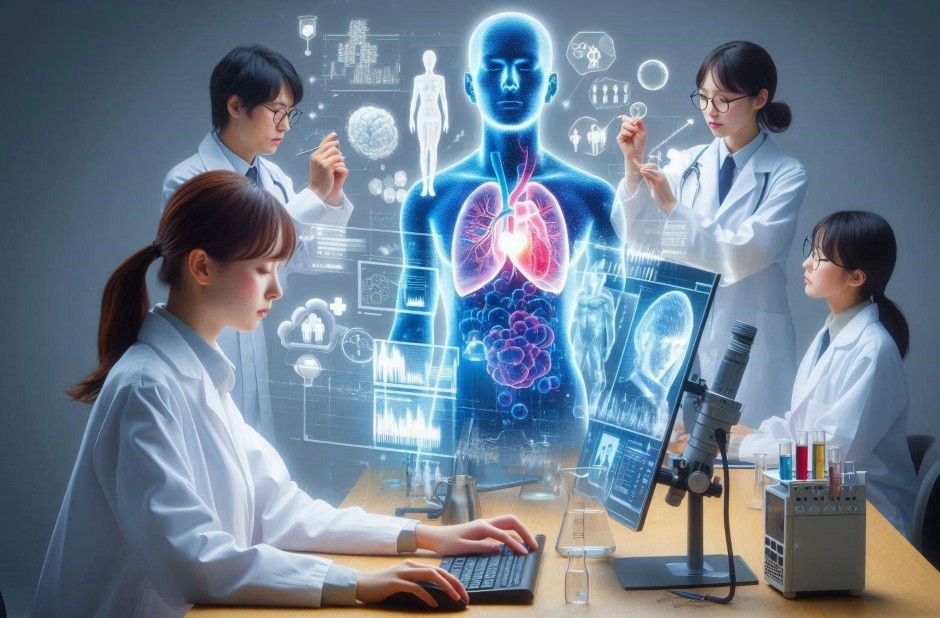In recent years, there has been a significant advancement in the field of Artificial Intelligence (AI) and Augmented Reality (AR). These technologies have become increasingly popular and have the potential to enhance virtual experiences in various fields such as gaming, education, healthcare, and...
Scientists Taught a Computer to Understand What People Dream About

In a groundbreaking achievement that sounds like science fiction, researchers have successfully developed artificial intelligence capable of interpreting human dreams. This revolutionary breakthrough combines advanced brain imaging technology with sophisticated machine learning algorithms to decode the mysterious world of our sleeping minds.
The Science Behind Dream Decoding
The research team utilized functional magnetic resonance imaging (fMRI) to monitor brain activity during different sleep phases. By analyzing neural patterns in the visual cortex and other brain regions, scientists identified specific signatures associated with dream imagery and emotions.
Key Technologies Involved
The dream decoding system relies on several cutting-edge technologies:
- High-resolution fMRI scanning - Captures detailed brain activity patterns during sleep
- Deep learning neural networks - Process and interpret complex brain signal patterns
- Computer vision algorithms - Translate neural activity into visual representations
- Natural language processing - Convert dream imagery into descriptive text
How the Dream Reading Process Works
The process begins when subjects enter REM sleep, the phase most associated with vivid dreaming. The fMRI scanner continuously monitors brain activity, particularly in areas responsible for visual processing, memory formation, and emotional responses.
Data Collection and Analysis
Researchers first trained their AI system using thousands of hours of brain scan data paired with detailed dream reports from volunteers. The machine learning algorithm learned to recognize patterns between specific neural activities and corresponding dream elements such as faces, objects, colors, and emotions.
During live dream analysis, the computer processes real-time brain signals and generates predictions about dream content with remarkable accuracy. Initial tests showed the system could correctly identify basic dream elements in approximately 75% of cases.

Potential Applications and Implications
Medical and Therapeutic Uses
This technology opens unprecedented opportunities in healthcare and psychology:
- Treatment of nightmares and sleep disorders
- Understanding trauma processing during sleep
- Diagnosis of certain neurological conditions
- Development of targeted dream-based therapies
Research and Scientific Discovery
Dream decoding provides researchers with powerful tools to study consciousness, memory consolidation, and the relationship between sleep and mental health. Scientists can now investigate how the brain processes daily experiences and emotions during rest periods.
Ethical Considerations and Future Challenges
While exciting, this technology raises important questions about privacy and consent. Dreams represent our most private thoughts and experiences, making dream reading a sensitive area requiring careful ethical guidelines.
Current Limitations
The current system has several constraints that researchers are working to overcome:
- Limited to basic visual and emotional elements
- Requires extensive individual calibration
- Cannot capture complex narrative structures
- Accuracy varies significantly between individuals
Looking Toward the Future
As technology advances, researchers anticipate more sophisticated dream interpretation capabilities. Future systems may decode complete dream narratives, understand symbolic meanings, and even enable dream recording and playback.
This breakthrough represents a significant step toward understanding one of the human brain's most enigmatic functions. While we're still far from fully comprehending the complexity of dreams, the ability to peek into the sleeping mind opens new frontiers in neuroscience, psychology, and human consciousness research.
The intersection of artificial intelligence and neuroscience continues to yield remarkable discoveries, and dream decoding stands as one of the most fascinating achievements in this rapidly evolving field.



